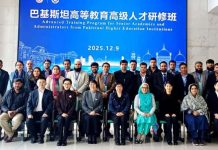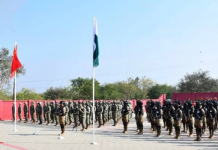The Chinese people are now marching ahead on the path to modernization. Modernization, however, may not evoke pleasant memories for everyone in the world. In many cases, it comes along with expansion, friction, and even conflict. But does it have to be this way? China has given a resounding answer: its modernization will be achieved through peaceful development. In fact, China is the only country whose Constitution says it “keeps to a path of peaceful development.” Why is this a big deal?
Peace is in China’s DNA
Like the Mayan, Inca and Egyptian civilizations, the Chinese civilization is an agrarian one. With their vast plains, the Chinese developed a generally self-sufficient economy, and would earn nature’s blessings through their hard work and resilience throughout millennia. Self-sufficiency, to a large extent, shaped the Chinese national character of cherishing peace.
From statesmen advocating the governance philosophy of “peace among all nations”, to the ordinary people believing “friendliness brings wealth”, the culture of peace has long been woven into the fabric of the Chinese society. Even The Art of War by Sun Tsu, a military work widely acclaimed by strategists across the world, stresses that “the skillful leader subdues the enemy’s troops without any fighting.”
The pursuit of peace is a consistent theme in China’s history. The Belt and Road Initiative proposed by President Xi Jinping is inspired by the ancient Silk Road and the Maritime Silk Road, which started and flourished respectively during the Han (206 B.C. to 220 A.D.) and Tang (618 A.D. to 906 A.D.) Dynasties, the heyday of China’s feudal society. But the purpose of the two roads was trade and exchange, not invasion or expansion. In the Ming Dynasty (1368–1644), China was leading the world economy and capable of building the world’s largest fleet. But when the great navigator Zheng He led seven voyages to the western oceans, what China sought was fair trade, not plundering or looting; it sent porcelain and tea leaves to countries along the route, not “sword and cross.”
China needs peaceful development for its modernization drive
On the path of peaceful development, China has never waged a war, or encroached upon a single inch of another country’s land. After the People’s Republic of China was founded, it took the lead in proposing and acting on the five principles of peaceful coexistence. Among the five permanent members of the U.N. Security Council, China is the largest contributor of peacekeepers. China is also the only one of the five nuclear-weapon states (P5) that has pledged no-first-use of nuclear weapons.
Peaceful development is the most realistic and best solution for China to pursue its national interests. China is advancing the rejuvenation of the Chinese nation on all fronts through a Chinese path to modernization. The key to this ambition is running its own affairs well, focusing on development and making its people better off. That, first and foremost, requires a peaceful and stable environment at home and abroad.
Giving up peaceful development is not cost-effective considering China’s endowment and its interdependence with the rest of the world. China has a supersize market with 1.4 billion people, including over 400 million in the middle-income group. China is a major trading partner of more than 140 countries and regions. These mean enormous potential in China’s consumption and export. China is also an innovation powerhouse and has complete industrial and infrastructure systems. Its high-tech industries such as new energy vehicles (NEVs), 5G and photovoltaics (PV) are highly competitive and enjoy a strong momentum. China is also deeply integrated into the international system, making huge progress amid globalization and benefiting the world in the process. As President Xi Jinping put it, “all countries are in a community with destinies linked.”
The global significance of China’s peaceful pursuit of modernization
From the 2nd CELAC Heads of State and Government Summit declaring that the Latin America and the Caribbean (LAC) was a “zone of peace”, the ASEAN Regional Forum Statement on Reiterating Commitment to Preserve Southeast Asia as A Nuclear Weapon-Free Zone, to the Jeddah Declaration adopted at the 32nd Arab League Summit emphasizing Arab unity and cooperation, and the AU Agenda 2063 aiming for “an integrated, prosperous and peaceful Africa” in 50 years, peace has always been the aspiration of the vast majority of countries and people.
As the world’s second most populous country and the second largest economy, China is developing itself by unleashing its internal dynamism and peacefully utilizing external resources. It does not oppress any other nation in any form or rob others of resources and wealth; instead, it goes all out to help and support fellow developing countries. The Chinese path to modernization via peaceful development will bring new hope to people of all countries who yearn for peace and development, and contribute even more to world peace, tranquility, prosperity and development.

















